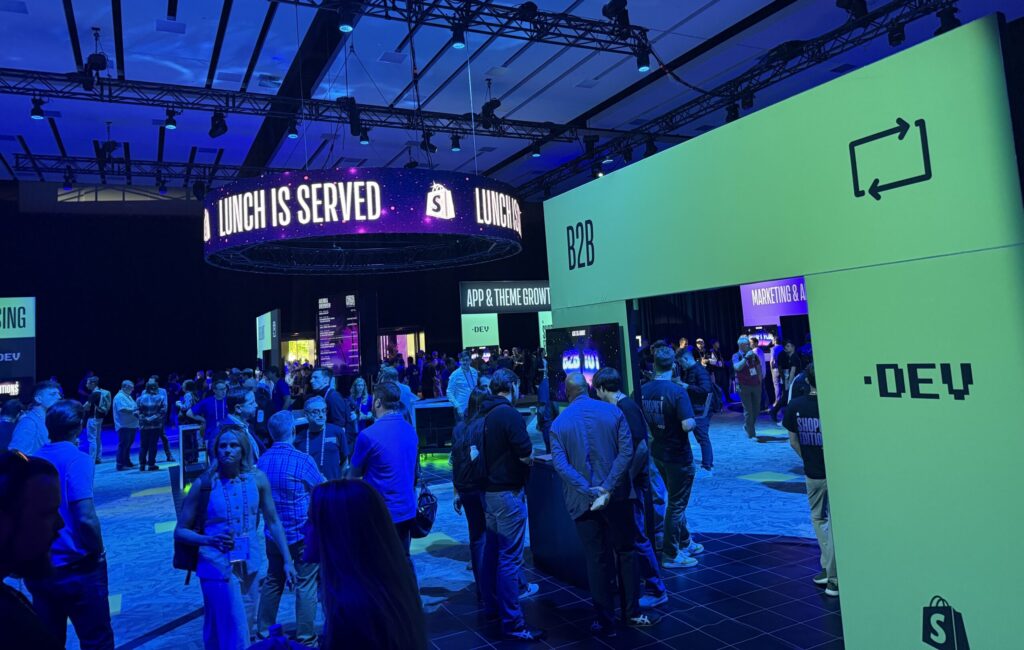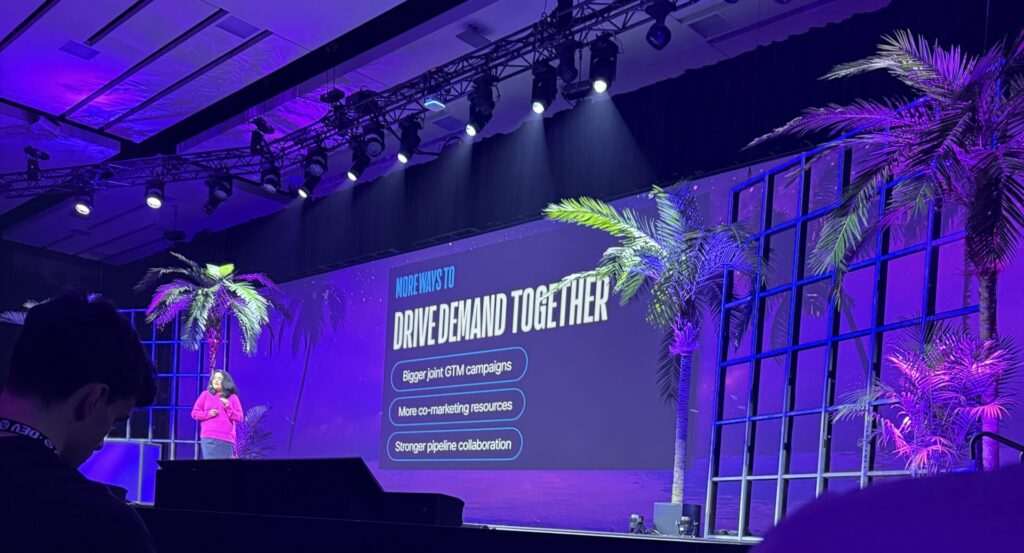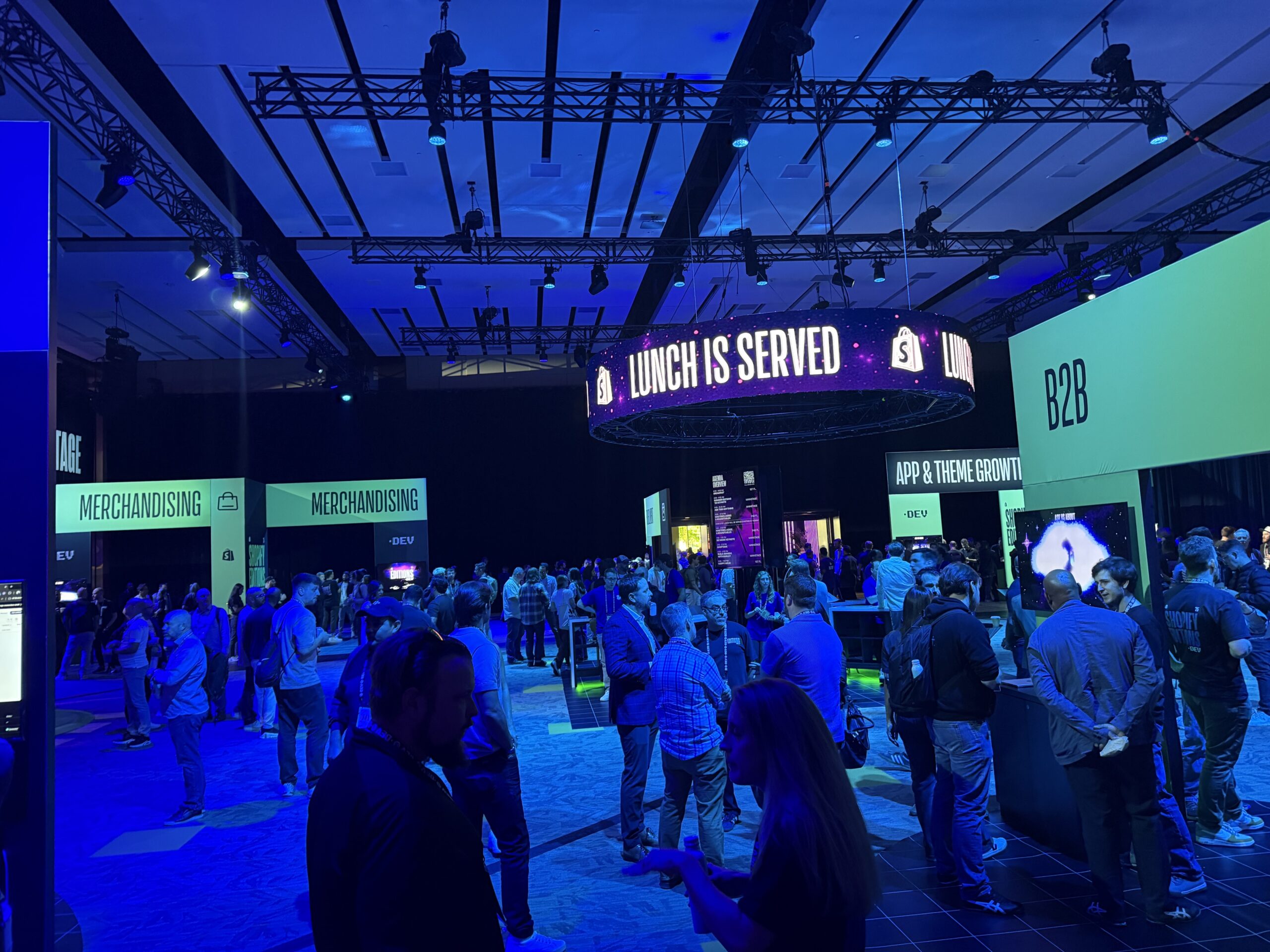Shopify’s Summer Editions ’25 just wrapped up, and was packed with big updates aimed at helping merchants and developers do more, faster. With powerful new tools, a smarter, more flexible platform, and a big leap forward with AI integration, this release was all about making commerce more intelligent and scalable.
In this post, we’re breaking down the key themes and standout announcements from this edition to help you quickly get up to speed. Prefer to listen? We’ve got you covered. Check out our AI-generated podcast below, thanks to the help of Notebook LM. In fact, I was able to put together this entire brief in a fraction of the time it would have taken me to write it up before with the help of Notebook LM.

Main Themes and Key Ideas:
The “Partner-Powered Future” and Developer Platform Advancements:
- Shopify is emphasizing the crucial role of its partners in driving merchant success and platform growth. The Editions.dev event underscored this vision.
- A major announcement is the “Next-gen developer platform,” designed to facilitate the building of high-quality apps with reduced complexity and less code. This platform is currently in early access and is slated for general availability in Q3 2025.
- Key components of the next-gen developer platform include:
- Modern tooling: Re-engineered app development, improved local testing with unified dev stores that can mimic specific Shopify plan types (Basic, Grow, Advanced, Plus). This addresses the difficulty developers previously faced in testing apps across different store configurations, particularly for Shopify Plus.
- Declarative custom data: A simplified approach to defining meta fields and meta objects using a .toml file. This eliminates the need for post-install hooks and manual schema updates across different stores, significantly streamlining development and deployment. Changes to the schema are automatically handled by Shopify across all installed shops.
- Polaris unified web components: A complete overhaul of Shopify’s design system components. The goal is to provide a consistent set of components across all Shopify interfaces (admin, checkout UI extensions, customer account extensions, and soon POS UI extensions), regardless of the developer’s framework. These components are delivered via a CDN, ensuring automatic updates for apps when the design is changed. This also addresses the issue of Polaris previously being primarily for React developers, making it accessible for other frameworks or no framework at all.
- The new “dev dashboard” will replace significant portions of the existing partner dashboard, specifically focusing on app building, configuration, monitoring, and dev store management. The partner dashboard will primarily handle app distribution to the App Store. This separation aims to provide a more focused and tailored experience for app builders.
- A notable benefit of the new dev dashboard and organization accounts is the ability for merchants to access the dev dashboard directly and build custom apps for their own stores, sharing them across multiple stores within their organization without needing a separate partner account.
- Key components of the next-gen developer platform include:
Horizon Theme – A New Era for Store Design:
- Horizon is introduced as the most advanced theme system released by Shopify, a “new design foundation.”
- It utilizes a block-based architecture, offering “modular drag-and-drop components” and “multiple levels of nested blocks up to 8 levels deep.” This provides merchants with significantly finer control over content and design without requiring coding knowledge.
- Horizon is positioned as the potential successor to the popular “Dawn” theme and is already the default theme for new Shopify stores. While Dawn will likely receive minor updates for a period, the new themes are expected to offer a much-improved customization experience.
- A key feature is the ability to use “global” blocks, allowing any block to be placed in any space on the theme.
- AI is integrated into the theme editor, enabling users to “Generate blocks” and “Generate themes” based on text descriptions, further simplifying the design process.
- The theme editor itself has received numerous improvements to enhance the user experience, including hover-to-preview in the block picker, categories for blocks and sections, one-click text editing, and simplified sidebar with conditional settings.
Expanded AI Capabilities, Especially with Sidekick:
- Shopify is “all in” on making AI accessible to all merchants, regardless of size or technical skills.
- The Sidekick AI assistant has been significantly upgraded, moving from a “helpful tool to indispensable business partner.”
- Sidekick now boasts “enhanced reasoning abilities, allowing for deeper thought and more proactive responses.” It can perform in-depth analysis of business data (sales, inventory, marketing, trends) and provide detailed suggestions for improvement.
- Sidekick is now available in 20 languages and on the Shopify mobile app.
- It also includes an image generation feature, allowing users to create visuals directly in the admin using keywords.
- While Sidekick shows potential, user feedback suggests it may still have limitations with multi-step requests and a complete understanding of Shopify’s full capabilities.
- [Shilo’s Note] While attending the Sidekick AMA they made a point to say that Sidekick wasn’t any time soon going to suggest anything proactively. There was also some talk about agent to agent and MCP (no not Master Control Program) but Model Context Protocol.
Enhanced B2B and Global Commerce Features:
- Shopify is expanding its capabilities for B2B and international selling.
- Merchants can now create “multiple B2B markets, each with unique catalogs, pricing, and themes.”
- New features are aimed at improving the international selling experience, such as the ability to set up specific shipping zones, manage different regions efficiently, and localize websites with international domains or subdomains.
- Identifying target markets is crucial, and merchants can use session reports to find locations with existing visitor or sales traffic. Starting with geographically close countries or those with similar consumer behaviors is recommended.
- Properly identifying Harmonized System (HS) codes for products is highlighted as essential for smooth international shipping and avoiding delays or unexpected fees. Merchants can choose to collect duties upfront from customers.
- Shopify Payments has expanded to 16 additional countries, facilitating international transactions.
- Merchants with Shopify Plus can now run global retail operations with “multiple international entities through a single admin.”
- Features for consent management, such as a consent audit log for GDPR and email marketing consent by region, are being introduced to aid with international compliance.
Operational and Checkout Improvements:
- Various updates focus on streamlining operations and improving the checkout experience.
- Refunds can now be issued as store credit, irrespective of the original payment method.
- For in-store retail, the Shopify Point of Sale (POS) system is being enhanced with features like split delivery methods, store credit management, smarter search with improved typo handling, and device-level payment settings. POS UI extensions allow for customized workflows.
- Discounts are being made more powerful, with the ability to “Create Powerful Promotions by Combining Multiple Discounts on One Order.” This allows for applying a single discount across products, orders, and shipping simultaneously.
- Checkout enhancements include flat rates for split shipping when fulfilling from multiple locations and more options for offering Apple Pay.
- Inventory management sees improvements with barcode scanning for transfers, the ability to track a single transfer in multiple shipments, and consolidated views for delivery methods by location.
- Shopify Flow, the automation tool, is receiving detailed troubleshooting data and enhanced “For each” loop functionality.
Focus on Partner Growth and Support:
- Shopify is actively investing in its partners, stating that “when partners lead, everyone wins.”
- The “Built for Shopify” program is being streamlined with “Simplified Built for Shopify design requirements” and improved email support for review processes.
- Partners with “Built for Shopify” status will receive priority app review, speeding up the approval process for future submissions.
- New advertising options allow partners to target merchants by plan type on the App Store, which has shown a higher click-through rate for “Built for Shopify” apps.

Important Ideas/Facts and Quotes:
- Partner-Powered Future: “Partners are our force multiplier—helping us reach more merchants, deliver faster value, and provide differentiated solutions tailored to real business needs. When partners lead, merchants thrive. And when merchants thrive, everyone grows.” – Rukmani Subramanian
- Developer Platform Goal: The Next-gen developer platform makes it “easier to quickly build high-quality apps with less code.”
- Declarative Custom Data Simplicity: “So once again you’re just defining it once in that tommoal file as a part of the app configuration Uh and then we’re taking care of all the heavy lifting to make that schema for you available for you on on every shop” – Aiden, Director of Product for the Shopify Developer Platform.
- Polaris Unified Web Components Consistency: “as you move from surface to surface you will encounter the same set of components” – Aiden. These components are delivered by a CDN, so app design updates are automatic.
- Merchants Building Apps: Merchants will “just automatically be able to access dev dev dashboard” through their organization account.
- Horizon Theme Flexibility: Horizon provides “much finer control over your content and design” with “multiple levels of nested blocks up to 8 levels deep” and “modular drag-and-drop components.”
- Horizon as the New Default: “Horizon is the new Dawn. It’s already the default theme if you start a new Shopify store right now.” – eduardf (Reddit user)
- AI Integration: “The future isn’t on its way—it’s already here. And we’re all in on making sure every merchant, no matter your size or tech skills, can harness its power.” – Shopify Staff on AI.
- Sidekick’s Enhanced Reasoning: Sidekick now offers “deeper thought and more proactive responses,” providing “a thorough analysis drawing from inventory levels, marketing campaigns, and seasonal trends—complete with detailed suggestions for improvement.”
- International Ecommerce Necessity: “Serving a global audience with international ecommerce isn’t just an advantage—it’s a necessity.” – Joe Hitchcock
- Discount Combinations: “With the ability to create powerful, unique promotions, comes the opportunity to grow your business. Shoppers will always be attracted to the best deals, and discount combinations can help you stand out from the crowd, attract new shoppers, and build customer loyalty.” – Benj Burke
- This briefing provides a high-level overview of the key takeaways from the Shopify Summer Editions ’25 announcements. The emphasis on empowering developers and merchants through improved tools, a flexible theme system, and the integration of AI signals Shopify’s continued commitment to evolving its platform for future e-commerce growth.
Based on the sources and our conversation, Admin Intents, MCP, and Shopify Catalog (the global API) were indeed significant topics highlighted, particularly for developers and partners, during the recent Shopify Editions events.
Here’s a summary of what the sources indicate about these areas, which would be the relevant information to potentially include in your briefing document:
- Admin Intents: This is described as a “new way to trigger admin actions using code”. For developers, this suggests enhanced programmatic control and automation capabilities within the Shopify admin interface.
- MCP (Model Context Protocol): This is highlighted as a key component for building AI shopping agents and conversational commerce experiences.
- Storefront MCP, powered by Anthropic’s Model Context Protocol, allows developers to build AI agents directly on a store site that can provide tailored product recommendations, answer questions, create carts, and guide shoppers to checkout.
- There was a masterclass at Editions.dev specifically on creating a storefront AI agent using MCP tools that provide apps with secure, LLM-friendly access to the Shopify platform.
- The Shopify.dev MCP Server offers AI assistance within the coding environment for tasks like working with GraphQL, Functions, and Polaris web components.
- MCP is seen as part of Shopify’s vision for moving “beyond bots”.
- Shopify Catalog / Global API: This was a particularly exciting announcement, described as the “first truly global API for Shopify, indexing products across all stores”.
- Tobi Lütke emphasized that this API allows AI platforms, like Perplexity, to access a massive product search index of millions of products from Shopify merchants. He noted, “the best product of Shopify is all the products of Shopify”.
- It opens up significant “white space for experimentation” for developers and partners, including building with Storefront MCP, catalog queries, 3D models, and new purchasing interfaces.
- The Shopify Catalog is in early access specifically for developers to build AI shopping agents.
- It exposes product data via API and integrates with Checkout Kit, with plans for a future “Global Cart” allowing cross-store checkouts.
- Updates to the Markets and Catalogs APIs are available in API version 2025-04.
These updates collectively underscore Shopify’s focus on AI integration, providing developers with powerful new tools and APIs for building intelligent, flexible, and globally connected commerce experiences.

Workshops at Editions
- Unified UI components: Learn how to build a consistent user experience across App Home, Admin, and Checkout using the new Polaris web components.
- Extend your app with Shopify Flow: Learn how to build and customize Shopify Flow actions in your app using the Remix template, including handling responses and external API calls.
- Building powerful solutions for B2B: Learn how to build a B2B app that manages credit limits using metafields, checkout extensions, Flow automation, and Shopify Functions.
- Using declarative custom data definitions with the new ‘app dev’: Learn how to use the improved ‘app dev’ command with declarative metaobject and metafield definitions to power functionality in Shopify app extensions.
- Building complex Shopify Functions made easy: Learn how to build advanced, customizable tiered discounts using Shopify Functions, the new Discount API, and AI-powered development tools.
- Building a great merchant-facing experience for customer account UI extensions: Learn how to build rich merchant-facing experiences using the editor extension API, extension collections, and Storefront API queries.
Additional Resources
- ShopifyDevs YouTube channel: Explore tutorials, workshops, and product updates for app and theme development.






